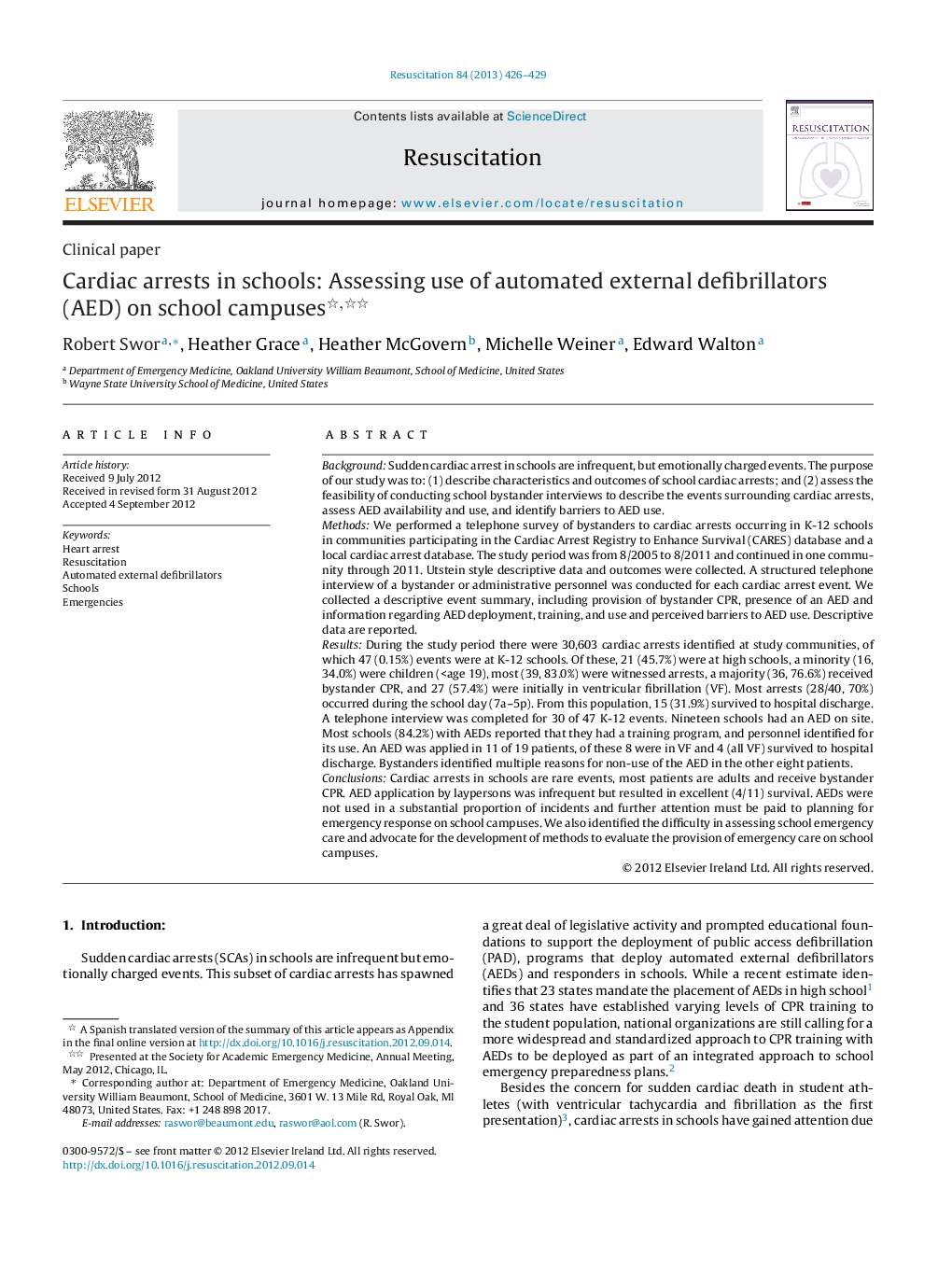| Article ID | Journal | Published Year | Pages | File Type |
|---|---|---|---|---|
| 3008106 | Resuscitation | 2013 | 4 Pages |
BackgroundSudden cardiac arrest in schools are infrequent, but emotionally charged events. The purpose of our study was to: (1) describe characteristics and outcomes of school cardiac arrests; and (2) assess the feasibility of conducting school bystander interviews to describe the events surrounding cardiac arrests, assess AED availability and use, and identify barriers to AED use.MethodsWe performed a telephone survey of bystanders to cardiac arrests occurring in K-12 schools in communities participating in the Cardiac Arrest Registry to Enhance Survival (CARES) database and a local cardiac arrest database. The study period was from 8/2005 to 8/2011 and continued in one community through 2011. Utstein style descriptive data and outcomes were collected. A structured telephone interview of a bystander or administrative personnel was conducted for each cardiac arrest event. We collected a descriptive event summary, including provision of bystander CPR, presence of an AED and information regarding AED deployment, training, and use and perceived barriers to AED use. Descriptive data are reported.ResultsDuring the study period there were 30,603 cardiac arrests identified at study communities, of which 47 (0.15%) events were at K-12 schools. Of these, 21 (45.7%) were at high schools, a minority (16, 34.0%) were children (
